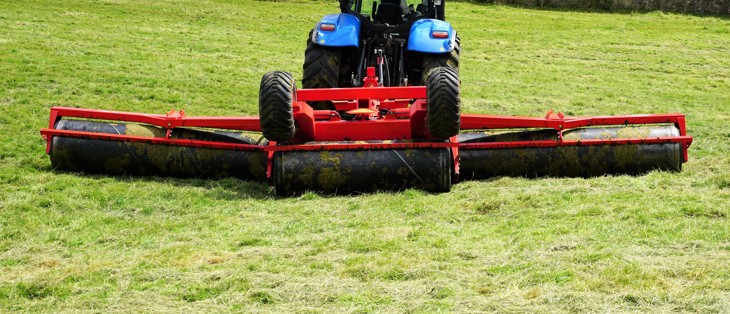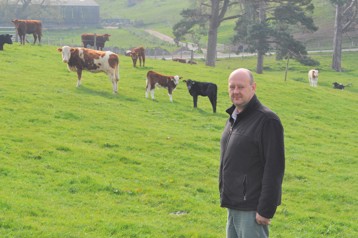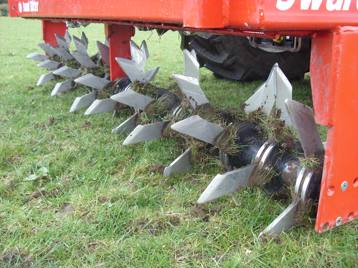HE-VA Grass Rolls - In the field
Geared up to manage a large grassland area

An effective and time-efficient grassland maintenance programme is essential for Shropshire farmer Ian Mainwaring. At Crimps Farm, in Ellesmere, he runs a busy mixed farm which includes 700 acres of grassland for his commercial spring-calving suckler herd.
Most of the grassland area is parkland and is permanent pasture. Soils on the farm are mainly loams but there is some sandy land and some heavy clay land too.
 Mr Mainwaring explains: “The suckler herd and followers are partially outwintered, so poaching and shallow compaction have always been issues here.
Mr Mainwaring explains: “The suckler herd and followers are partially outwintered, so poaching and shallow compaction have always been issues here.
“In a normal year, we will flat roll the parkland in early spring to iron out the poached ground. We used to have a 3m wide set of rolls and these had to be literally rolled along the road in-between fields.
“A few years ago, we invested in a set of HE-VA grass rolls which fold down to an 8m working width but fold up hydraulically for moving between fields. This significantly increased our daily work rates: we not only cover more ground more quickly in the field, we can also safely achieve road travel speeds of 20mph.
“Once the ground has been rolled, we follow with a 6m wide folding slitter, then we’ll take a tine harrow through to remove the molehills and cowpats. Sometimes we roll a second time, but we’ll make that decision on a field by field basis.
“Once the ground had been levelled, we reseed any bare areas using a seed box on our grass harrow, or broadcast seed on with a slug pelleter on the back of a quad bike.
“This spring, the rolls and slitter will have a lot of work to repair damaged swards from the very wet autumn and winter we’ve experienced. As well as poaching, there’s rutting of tracks, and we’ve had waterlogging and flooding too.

Silage leys
Silage leys account for 200 acres of the grassland and are reseeded on a rotational basis every 5 years. Cattle do not graze these fields and so the spring maintenance programme is just two steps: slitting to get air down to grass roots to stimulate growth, and then rolling.
Mr Mainwaring explains: “Rolling is important – but not just to keep soil out of the clamp by flattening down loose stones or sods the slitter has thrown up and levelling out molehills. Rolling also helps prevent diffuse pollution: a lot of our land is sloping and there is risk of run off into a nearby canal and the town’s meres.”
Article first appeared in ![]() Feb 21st 2020
Feb 21st 2020
Opico Company News


 Share via WhatsApp
Share via WhatsApp
